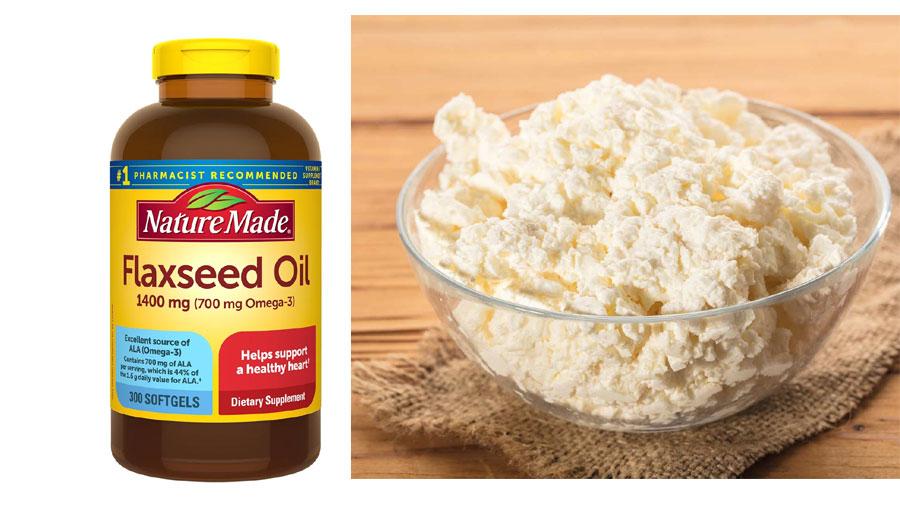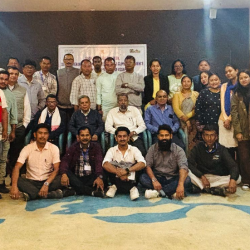Welcome to our deep dive into the Budwig Protocol, a natural dietary and lifestyle regimen that’s been sparking curiosity for decades. Developed by German biochemist Dr. Johanna Budwig in the 1950s, this protocol is often promoted as a complementary approach for cancer patients, but it’s also gained traction among those seeking overall wellness. So, what’s it all about? Let’s break it down in a way that’s easy to digest, explore its core components, weigh the potential benefits and risks, and see if it’s something worth considering.
What Is the Budwig Protocol?
At its heart, the Budwig Protocol is a nutrition-focused plan designed to boost cellular health. Dr. Budwig, a pioneer in fatty acid research, believed that combining specific nutrients—namely omega-3-rich flaxseed oil and sulfur-packed cottage cheese—could enhance oxygen uptake in cells, potentially slowing cancer cell growth. Her ideas were inspired by Nobel laureate Otto Warburg’s work on cancer and cellular respiration. Budwig claimed her protocol helped thousands of patients, boasting a 90% success rate, though these claims rely heavily on anecdotal reports rather than clinical trials.
Beyond diet, the protocol embraces a holistic lifestyle, incorporating sunlight, exercise, and emotional well-being. It’s less about quick fixes and more about a long-term commitment to natural living. Intrigued? Let’s unpack the key elements.
The Core of the Budwig Protocol
1. The Flaxseed Oil and Cottage Cheese Powerhouse
The star of the show is a simple yet specific blend of cold-pressed flaxseed oil and cottage cheese (or quark). Budwig believed this combo makes omega-3 fatty acids more bioavailable, supercharging your cells’ ability to function. Here’s how it works:
- How to make it: Mix 2 parts cottage cheese with 1 part flaxseed oil (e.g., 4 oz cheese to 2 oz oil). Blend until creamy, adding a touch of honey, fruit, or nuts for flavor. It must be eaten fresh within 20 minutes.
- How often: Aim for 2–4 servings daily.
- Why it matters: Budwig theorized that this mixture improves electron transfer in cell membranes, boosting oxygen levels and creating an environment where cancer cells struggle to thrive.
2. A Wholesome, Plant-Based Diet
The protocol isn’t just about one superfood mix—it’s a full dietary overhaul. Think vibrant, unprocessed, and organic. Here’s what’s on the menu:
- Eat plenty of: Fresh fruits and veggies (raw or lightly cooked), whole grains, nuts, seeds, and freshly pressed juices. Herbal teas are a go-to for hydration.
- Avoid like the plague: Processed foods, refined sugars, white flour, most meats, animal fats, butter, margarine, and trans fats. Budwig was adamant that these disrupt cellular health.
This lacto-vegetarian approach aligns with many modern health recommendations, focusing on nutrient-dense foods that fuel your body.
3. A Holistic Lifestyle
Budwig didn’t stop at diet. She believed true healing involves mind, body, and spirit. Her lifestyle tips include:
- Sunlight: Get 20 minutes of daily sun exposure (without sunscreen) to boost vitamin D and “energize” fatty acids. But don’t overdo it—skin cancer is a real risk.
- Exercise: Gentle activities like walking to keep your body active.
- Mental health: Practices like meditation or journaling to reduce stress and foster emotional balance.
- Optional extras: Some followers use coffee or water enemas for detox, but these are controversial and not universally endorsed.
Does It Work? The Science Bit
Here’s where things get tricky. The Budwig Protocol sounds promising, but the evidence is thin. Let’s break it down:
- No clinical trials: There are no peer-reviewed studies proving the protocol cures or prevents cancer. Most success stories are anecdotal, and Budwig’s own claims lack rigorous documentation.
- Flaxseed’s potential: Some research supports flaxseed’s benefits. Animal studies suggest it may reduce tumor growth in breast, prostate, and lung cancers. Omega-3s can lower inflammation, and a small 2001 study hinted that flaxseed might slow prostate cancer progression by reducing testosterone. But these are far from conclusive for humans.
- Dietary perks: The protocol’s emphasis on whole foods and low processed junk aligns with general cancer-prevention guidelines. A veggie-heavy diet is rarely a bad idea.
Budwig’s theories about cellular respiration and fats are fascinating but oversimplify cancer’s complexity. Modern science sees cancer as a multifaceted disease, and no single diet is a cure-all.
Potential Benefits
So, why do people try it? Here are some upsides:
- Nutrient boost: The diet is packed with omega-3s, fiber, antioxidants, and vitamins, which are great for overall health.
- Anti-inflammatory effects: Omega-3s may reduce inflammation, potentially easing symptoms for cancer patients or those with chronic conditions.
- Weight support: Flaxseed’s calories can help cancer patients maintain weight during treatment.
- Holistic vibes: The focus on mental health, movement, and natural foods can improve quality of life, even if it doesn’t shrink tumors.
Risks to Watch Out For
Before you stock up on flaxseed oil, consider these downsides:
- Nutritional gaps: Cutting out meats and most dairy could lead to deficiencies in protein, iron, B12, or calcium if you’re not careful.
- Medication clashes: High doses of flaxseed oil might thin your blood, messing with clotting drugs.
- Digestive woes: Too much flaxseed without enough water can cause bloating, gas, or even bowel issues.
- Sun exposure: Prolonged sunbathing increases skin cancer risk—ironic for a cancer-focused protocol.
- Delaying treatment: The biggest red flag? Relying on the protocol instead of proven treatments like chemo or surgery. This can be dangerous, even deadly.
- Allergies: Flaxseed allergies are rare but possible.
Real Stories, Real Questions
You’ll find plenty of testimonials online—like a mesothelioma survivor who credited the protocol for a remarkable recovery after chemo failed. These stories are inspiring but hard to verify. Was it the diet, other treatments, or something else? Without data, it’s tough to say.
How to Try It Safely
Thinking of giving it a go? Here’s how to approach it wisely:
- Talk to your doctor: Especially if you’re in cancer treatment or have health conditions. They can ensure it won’t interfere with your care.
- Work with a dietitian: To avoid deficiencies and tailor the diet to your needs.
- Perfect the mix: Blend the flaxseed oil and cottage cheese thoroughly. If dairy’s an issue, ask about substitutes like kefir or yogurt (especially for feeding tubes).
- Commit long-term: Budwig suggested sticking with it for 5 years for cancer patients.
- Balance it: Use the protocol as a complement, not a replacement, for conventional treatments.
The Bottom Line
The Budwig Protocol is a compelling blend of nutrition and holistic living, rooted in a desire to heal naturally. Its focus on healthy fats, whole foods, and mindfulness is appealing, and some of its principles align with modern wellness trends. But as a cancer cure? The science just isn’t there. Without clinical evidence, it’s risky to lean on it as your only defense against serious illness.
That said, as a complementary approach under medical supervision, it might offer nutritional and emotional benefits for some. If you’re curious, talk to your healthcare team to see if it fits your journey. Health is personal, and the best path is one that’s informed, balanced, and tailored to you.
Have you tried the Budwig Protocol or similar diets? Share your thoughts below, or let us know if you want recipes or tips to get started!
Recipe: Flaxseed Oil and Cottage Cheese Cream
This recipe is the cornerstone of the Budwig Protocol, designed to combine flaxseed oil and cottage cheese into a creamy, nutrient-packed blend that’s central to Dr. Johanna Budwig’s approach. It’s simple, customizable, and meant to be eaten fresh for maximum benefit. Below is a basic version with optional add-ins for flavor.
Ingredients (Serves 1)
- 2 oz (4 tbsp) cold-pressed flaxseed oil (organic, refrigerated, high-quality)
- 4 oz (½ cup) low-fat cottage cheese (organic preferred, or quark if available)
- 1–2 tsp raw honey (optional, for sweetness)
- 1–2 tbsp ground flaxseeds (freshly ground for best results)
- ½ cup fresh berries (e.g., blueberries, raspberries, or strawberries, optional)
- ¼ tsp vanilla extract or pinch of cinnamon (optional, for flavor)
- 1–2 tbsp water or milk (optional, to adjust consistency.
Instructions
- Blend the Base:
- In a small bowl or blender, combine 4 oz cottage cheese and 2 oz flaxseed oil. Use an immersion blender, food processor, or whisk to blend thoroughly until the mixture is smooth and creamy, with no visible oil separation. This emulsification is key to the Budwig Protocol’s theory of bioavailability. (Takes about 1–2 minutes.)
- Adjust Consistency (Optional):
- If the mixture is too thick, add 1–2 tbsp of water or milk (dairy or plant-based) and blend again until it reaches a yogurt-like consistency.
- Add Flavor (Optional):
- Stir in 1–2 tsp raw honey, a pinch of cinnamon, or vanilla extract for taste.
- Fold in fresh berries or sprinkle 1–2 tbsp freshly ground flaxseeds on top for texture and added nutrients.
- Serve Immediately:
- Transfer to a bowl and eat within 20 minutes to preserve the freshness of the flaxseed oil. Pair with a side of fresh fruit or a slice of whole-grain bread for a complete Budwig-friendly meal.
Tips
- Storage: Do not prepare in advance; the mixture loses potency if it sits. Make only what you’ll eat right away.
- Substitutes: If cottage cheese isn’t an option (e.g., dairy intolerance), consult a Budwig practitioner about alternatives like kefir or yogurt, though these may alter the protocol’s intended effect.
- Sourcing: Use organic, cold-pressed flaxseed oil stored in a dark bottle and refrigerated to avoid rancidity. Check expiration dates.
- Variation: For a savory twist, skip the honey and fruit and add chopped herbs (e.g., parsley) or a sprinkle of turmeric.
Welcome to our deep dive into the Budwig Protocol, a natural dietary and lifestyle regimen that’s been sparking curiosity for decades. Developed by German biochemist Dr. Johanna Budwig in the 1950s, this protocol is often promoted as a complementary approach for cancer patients, but it’s also gained traction among those seeking overall wellness. So, what’s it all about? Let’s break it down in a way that’s easy to digest, explore its core components, weigh the potential benefits and risks, and see if it’s something worth considering.
What Is the Budwig Protocol?
At its heart, the Budwig Protocol is a nutrition-focused plan designed to boost cellular health. Dr. Budwig, a pioneer in fatty acid research, believed that combining specific nutrients—namely omega-3-rich flaxseed oil and sulfur-packed cottage cheese—could enhance oxygen uptake in cells, potentially slowing cancer cell growth. Her ideas were inspired by Nobel laureate Otto Warburg’s work on cancer and cellular respiration. Budwig claimed her protocol helped thousands of patients, boasting a 90% success rate, though these claims rely heavily on anecdotal reports rather than clinical trials.
Beyond diet, the protocol embraces a holistic lifestyle, incorporating sunlight, exercise, and emotional well-being. It’s less about quick fixes and more about a long-term commitment to natural living. Intrigued? Let’s unpack the key elements.
The Core of the Budwig Protocol
1. The Flaxseed Oil and Cottage Cheese Powerhouse
The star of the show is a simple yet specific blend of cold-pressed flaxseed oil and cottage cheese (or quark). Budwig believed this combo makes omega-3 fatty acids more bioavailable, supercharging your cells’ ability to function. Here’s how it works:
- How to make it: Mix 2 parts cottage cheese with 1 part flaxseed oil (e.g., 4 oz cheese to 2 oz oil). Blend until creamy, adding a touch of honey, fruit, or nuts for flavor. It must be eaten fresh within 20 minutes.
- How often: Aim for 2–4 servings daily.
- Why it matters: Budwig theorized that this mixture improves electron transfer in cell membranes, boosting oxygen levels and creating an environment where cancer cells struggle to thrive.
2. A Wholesome, Plant-Based Diet
The protocol isn’t just about one superfood mix—it’s a full dietary overhaul. Think vibrant, unprocessed, and organic. Here’s what’s on the menu:
- Eat plenty of: Fresh fruits and veggies (raw or lightly cooked), whole grains, nuts, seeds, and freshly pressed juices. Herbal teas are a go-to for hydration.
- Avoid like the plague: Processed foods, refined sugars, white flour, most meats, animal fats, butter, margarine, and trans fats. Budwig was adamant that these disrupt cellular health.
This lacto-vegetarian approach aligns with many modern health recommendations, focusing on nutrient-dense foods that fuel your body.
3. A Holistic Lifestyle
Budwig didn’t stop at diet. She believed true healing involves mind, body, and spirit. Her lifestyle tips include:
- Sunlight: Get 20 minutes of daily sun exposure (without sunscreen) to boost vitamin D and “energize” fatty acids. But don’t overdo it—skin cancer is a real risk.
- Exercise: Gentle activities like walking to keep your body active.
- Mental health: Practices like meditation or journaling to reduce stress and foster emotional balance.
- Optional extras: Some followers use coffee or water enemas for detox, but these are controversial and not universally endorsed.
Does It Work? The Science Bit
Here’s where things get tricky. The Budwig Protocol sounds promising, but the evidence is thin. Let’s break it down:
- No clinical trials: There are no peer-reviewed studies proving the protocol cures or prevents cancer. Most success stories are anecdotal, and Budwig’s own claims lack rigorous documentation.
- Flaxseed’s potential: Some research supports flaxseed’s benefits. Animal studies suggest it may reduce tumor growth in breast, prostate, and lung cancers. Omega-3s can lower inflammation, and a small 2001 study hinted that flaxseed might slow prostate cancer progression by reducing testosterone. But these are far from conclusive for humans.
- Dietary perks: The protocol’s emphasis on whole foods and low processed junk aligns with general cancer-prevention guidelines. A veggie-heavy diet is rarely a bad idea.
Budwig’s theories about cellular respiration and fats are fascinating but oversimplify cancer’s complexity. Modern science sees cancer as a multifaceted disease, and no single diet is a cure-all.
Potential Benefits
So, why do people try it? Here are some upsides:
- Nutrient boost: The diet is packed with omega-3s, fiber, antioxidants, and vitamins, which are great for overall health.
- Anti-inflammatory effects: Omega-3s may reduce inflammation, potentially easing symptoms for cancer patients or those with chronic conditions.
- Weight support: Flaxseed’s calories can help cancer patients maintain weight during treatment.
- Holistic vibes: The focus on mental health, movement, and natural foods can improve quality of life, even if it doesn’t shrink tumors.
Risks to Watch Out For
Before you stock up on flaxseed oil, consider these downsides:
- Nutritional gaps: Cutting out meats and most dairy could lead to deficiencies in protein, iron, B12, or calcium if you’re not careful.
- Medication clashes: High doses of flaxseed oil might thin your blood, messing with clotting drugs.
- Digestive woes: Too much flaxseed without enough water can cause bloating, gas, or even bowel issues.
- Sun exposure: Prolonged sunbathing increases skin cancer risk—ironic for a cancer-focused protocol.
- Delaying treatment: The biggest red flag? Relying on the protocol instead of proven treatments like chemo or surgery. This can be dangerous, even deadly.
- Allergies: Flaxseed allergies are rare but possible.
Real Stories, Real Questions
You’ll find plenty of testimonials online—like a mesothelioma survivor who credited the protocol for a remarkable recovery after chemo failed. These stories are inspiring but hard to verify. Was it the diet, other treatments, or something else? Without data, it’s tough to say.
How to Try It Safely
Thinking of giving it a go? Here’s how to approach it wisely:
- Talk to your doctor: Especially if you’re in cancer treatment or have health conditions. They can ensure it won’t interfere with your care.
- Work with a dietitian: To avoid deficiencies and tailor the diet to your needs.
- Perfect the mix: Blend the flaxseed oil and cottage cheese thoroughly. If dairy’s an issue, ask about substitutes like kefir or yogurt (especially for feeding tubes).
- Commit long-term: Budwig suggested sticking with it for 5 years for cancer patients.
- Balance it: Use the protocol as a complement, not a replacement, for conventional treatments.
The Bottom Line
The Budwig Protocol is a compelling blend of nutrition and holistic living, rooted in a desire to heal naturally. Its focus on healthy fats, whole foods, and mindfulness is appealing, and some of its principles align with modern wellness trends. But as a cancer cure? The science just isn’t there. Without clinical evidence, it’s risky to lean on it as your only defense against serious illness.
That said, as a complementary approach under medical supervision, it might offer nutritional and emotional benefits for some. If you’re curious, talk to your healthcare team to see if it fits your journey. Health is personal, and the best path is one that’s informed, balanced, and tailored to you.
Have you tried the Budwig Protocol or similar diets? Share your thoughts below, or let us know if you want recipes or tips to get started!
Ingredients (Serves 1)
Recipe: Flaxseed Oil and Cottage Cheese Cream
This recipe is the cornerstone of the Budwig Protocol, designed to combine flaxseed oil and cottage cheese into a creamy, nutrient-packed blend that’s central to Dr. Johanna Budwig’s approach. It’s simple, customizable, and meant to be eaten fresh for maximum benefit. Below is a basic version with optional add-ins for flavor.
Ingredients (Serves 1)
- 2 oz (4 tbsp) cold-pressed flaxseed oil (organic, refrigerated, high-quality)
- 4 oz (½ cup) low-fat cottage cheese (organic preferred, or quark if available)
- 1–2 tsp raw honey (optional, for sweetness)
- 1–2 tbsp ground flaxseeds (freshly ground for best results)
- ½ cup fresh berries (e.g., blueberries, raspberries, or strawberries, optional)
- ¼ tsp vanilla extract or pinch of cinnamon (optional, for flavor)
- 1–2 tbsp water or milk (optional, to adjust consistency)
Instructions
- Blend the Base:
- In a small bowl or blender, combine 4 oz cottage cheese and 2 oz flaxseed oil. Use an immersion blender, food processor, or whisk to blend thoroughly until the mixture is smooth and creamy, with no visible oil separation. This emulsification is key to the Budwig Protocol’s theory of bioavailability. (Takes about 1–2 minutes.)
- Adjust Consistency (Optional):
- If the mixture is too thick, add 1–2 tbsp of water or milk (dairy or plant-based) and blend again until it reaches a yogurt-like consistency.
- Add Flavor (Optional):
- Stir in 1–2 tsp raw honey, a pinch of cinnamon, or vanilla extract for taste.
- Fold in fresh berries or sprinkle 1–2 tbsp freshly ground flaxseeds on top for texture and added nutrients.
- Serve Immediately:
- Transfer to a bowl and eat within 20 minutes to preserve the freshness of the flaxseed oil. Pair with a side of fresh fruit or a slice of whole-grain bread for a complete Budwig-friendly meal.
Tips
- Storage: Do not prepare in advance; the mixture loses potency if it sits. Make only what you’ll eat right away.
- Substitutes: If cottage cheese isn’t an option (e.g., dairy intolerance), consult a Budwig practitioner about alternatives like kefir or yogurt, though these may alter the protocol’s intended effect.
- Sourcing: Use organic, cold-pressed flaxseed oil stored in a dark bottle and refrigerated to avoid rancidity. Check expiration dates.
- Variation: For a savory twist, skip the honey and fruit and add chopped herbs (e.g., parsley) or a sprinkle of turmeric.
Notes
- Portion Size: The Budwig Protocol typically recommends 2–4 servings daily for therapeutic use. Consult your healthcare provider to tailor the amount to your needs.
- Safety: If you’re on blood-thinning medications, check with your doctor, as flaxseed oil may affect clotting. Ensure the diet doesn’t lead to nutritional deficiencies by balancing it with other foods.
Enjoy this creamy, nutrient-rich dish as part of a holistic approach to health, and always discuss dietary changes with your medical team, especially if you’re managing a serious condition like cancer.
- Portion Size: The Budwig Protocol typically recommends 2–4 servings daily for therapeutic use. Consult your healthcare provider to tailor the amount to your needs.
- Safety: If you’re on blood-thinning medications, check with your doctor, as flaxseed oil may affect clotting. Ensure the diet doesn’t lead to nutritional deficiencies by balancing it with other foods.
Enjoy this creamy, nutrient-rich dish as part of a holistic approach to health, and always discuss dietary changes with your medical team, especially if you’re managing a serious condition like cancer.
- 24084 reads








Add new comment